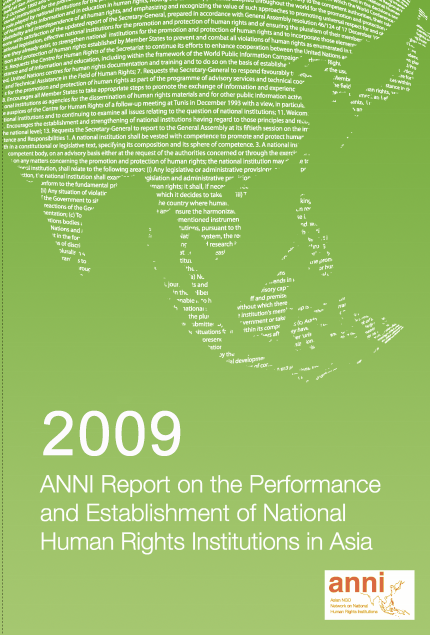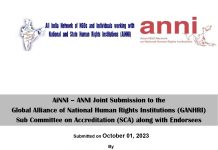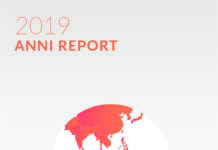A Regional Overview: How do Asian
NHRIs choose their members and
how do they receive our complaints?

In the 2008 ANNI Report, the relationship between national human
rights institutions (NHRIs) and non-governmental organizations
(NGOs), has been generally described as “rockyâ€. A variety of
reasons was given for this, but there are two main factors that
emerged. First, NGOs generally engage with NHRIs if they perceive
the latter as independent. Second, NGOs also generally engage with
NHRIs if the latter respond to complaints of human rights violations
forwarded to them effectively and efficiently. It was for this reason
that for the 2009 ANNI Report, the members of the ANNI made the
decision to look closely into how NHRIs in Asia selects and appoints
their members and how these NHRIs receive and investigate
complaints filed by victims of human rights violations.
The 2009 ANNI Report reveals that in most countries in Asia,
human rights defenders are often not consulted in the selection
and appointment process of members of NHRIs. In some cases, the
power to select and appoint is given solely to the executive branch
of the government. In other cases, it is the legislative body that is
given the discretion to select and appoint the members. In most
cases, there is no prior consultation nor an open announcement
seeking nominations for the posts. Appointments are viewed as
rewards to political allies of the appointing powers and more
often, expertise and commitment to human rights are not given
primary consideration.
With respect to how NHRIs respond to complaints filed before
them, many of the reports this year found that sometimes, it is the
enabling law of the NHRI itself that serves as a stumbling block to
responding effectively and effectively to complaints. In other cases,
it was revealed that it is the NHRI itself that lacks the political will
to pursue these complaints, despite the strong mandate to do so.












